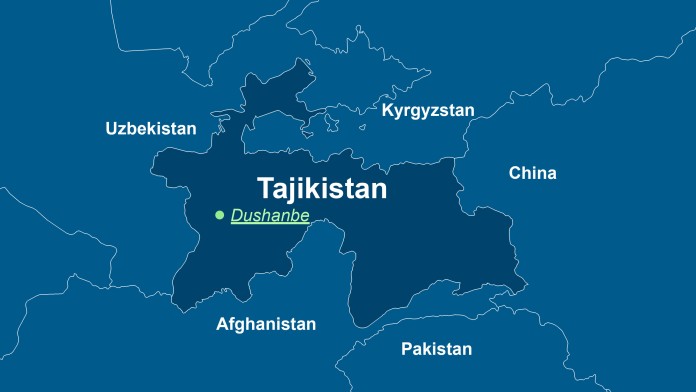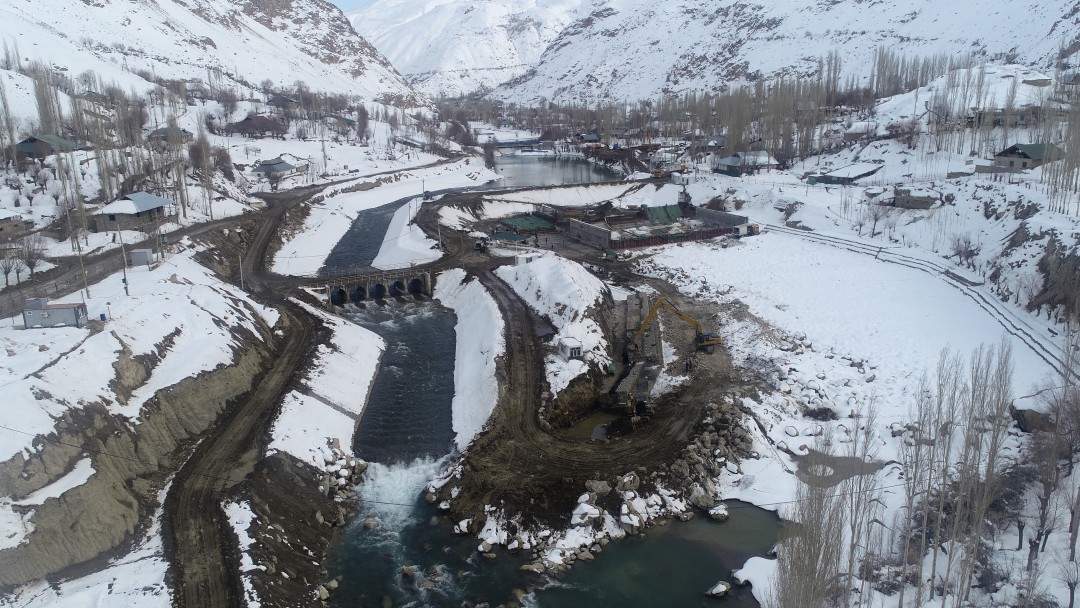
As of: 02/2024
Until now, the electricity supply for the people in the remote east of Tajikistan has been unreliable. The two power plants on the river Gunt have already failed several times due to avalanches and landslides blocking the waterway. Commissioned by the German Federal Government and the European Union, KfW is now promoting the building of a new hydropower station on a neighbouring river. This will supply the people in Tajikistan’s Berg-Badachschan region and neighbouring Afghanistan with reliable, sustainably generated electricity. This is a basis for further economic development in the region. The new hydro power plant is the first in the world to be successfully certified according to an international sustainability standard.
The east of Tajikistan is characterised by high mountains and deep gorges. The Pamir mountains tower up to 7,500 metres high. Here in the province of Berg-Badachschan, living conditions for the people are poor. Even the electricity supply is unreliable. This comes from two hydropower stations, both of which are located on the river Gunt. Avalanches, landslides and flooding are regular occurences, and block the river, while there is the possibility that mudslides could damage the power plant itself.
Drought periods also jeopardise electricity supply due to low drainage volumes, especially in winter when less snow and glacier water flows into the rivers. Outages have always been a possibility. So far, these have been prevented by storing enough water to operate the power plant at Gunt in a reservoir in Yashilkul. But these reserves are now also at risk. Climate change is resulting in less rainfall. On top of this, avalanches and landslides can block the river. An alternative to the existing electricity supply that is not dependent on the river Gunt is therefore important.

Commissioned by the Federal Ministry for Economic Cooperation and Development (BMZ) and the European Union, KfW is financing the building of another hydropower station on the Shokhdara tributary with around EUR 63 million. This is set to supply electricity not only to people in the autonomous province of Berg-Badachschan in the east of Tajikistan, but also to people in Ishkashim and bordering provinces in Afghanistan that are connected to Pamir Energy’s electricity grid. The new power plant is expected to supply around 300,000 people with electricity, 55,000 of whom on the Afghan side (in the four districts of Ishkashim, Shugnan, Mohi Mai and Nusai).
The Sebzor power plant is a run-of-river power plant, i.e. electricity is generated by water flow that is produced as result of the difference in height of the water accumulated above the river using a weir, and drives turbines in the power plant further down. The output will amount to 11 megawatts.
The hydropower station financed by KfW was the first in the world to be certified in accordance with the Hydropower Sustainability Standard of the International Hydropower Association (IHA), an association of 100 companies in the industry. Environmentally friendly and socially affordable hydropower is at the heart of this association. An Environmental and Social Management Plan (ESMP) according to World Bank standards is helping to minimise the necessary interventions in nature. A fish ladder is also being built so that migrating fish species can bypass the power plant.
Altogether 17 households with a total of 100 people were relocated for the building of the power plant. Some hectares of arable land will be lost. In total, 35 families' ability to use the land is being adversely impacted by the new power plant. These families are receiving compensation and support measures to secure their future. They are receiving new houses financed from project funds in another residential area, basic financial training and support to start a business. Business ideas include setting up nurseries, growing medicinal plants, using greenhouses, tailoring, cooking, baking, setting up a cheese factory or setting up a local transport company. The huge amount of support provided to these families is one reason why the new hydro power station was certified according to the IHA's high standards.
The reliable electricity supply from the new power plant will give the region new economic impetus. Jobs will be created and new income generated. This is also set to improve educational opportunities, health care and the nutrition situation. Subsidised and thereby socially affordable electricity tariffs are being offered.
Where previously, much of their time would have been spent in acquiring firewood, women in particular stand to benefit from the reliable electricity supply. They will now have to spend less time carrying out this traditional work, as they will be able to use more electricity as an energy source instead of firewood. With the help of KfW’s financial support, the project-executing agency Pamir Energy will also grant scholarships to young women from the region for studies relevant to the energy sector and possible future employment at Pamir Energy.
Building the power plant is helping to reliably supply more than 300,000 people with sustainable electricity at socially affordable prices.
The project contributes to the achievement of these following United Nations Sustainable Development Goals:
KfW Group
KfW Development Bank
Country sector Europe/Asia
Share page
To share the content of this page with your network, click on one of the icons below.
Note on data protection: When you share content, your personal data is transferred to the selected network.
Data protection
Alternatively, you can also copy the short link: https://www.kfw-entwicklungsbank.de/s/enzBy5_w
Copy link Link copied